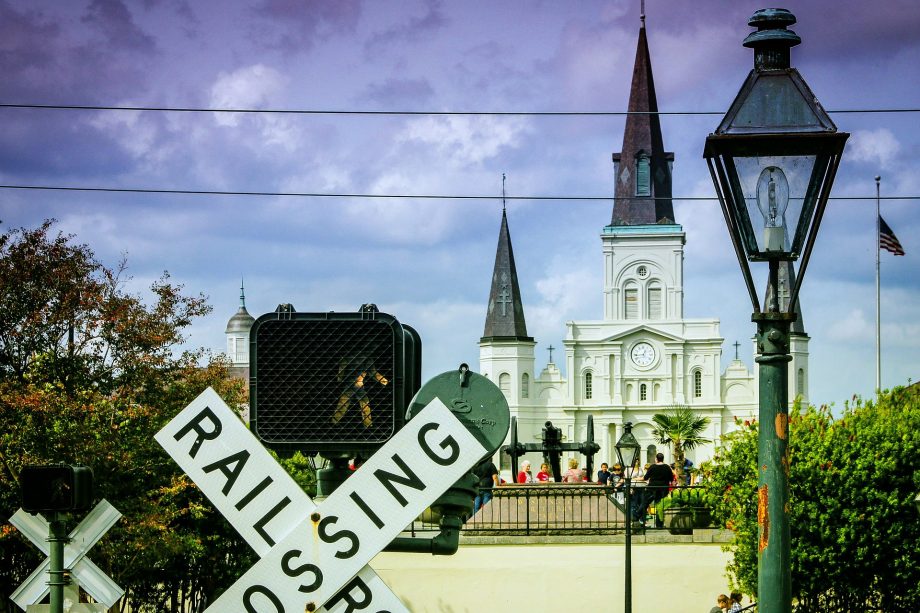European travellers looking for home comforts after crossing the Atlantic will surely flock to New Orleans in their droves. The port city located in lush Louisiana is rich in heritage and history, packed with cultural pursuits, glorious architecture and winding rivers and lakes.
History of New Orleans
While closely identified with gallic culture, ownership of New Orleans actually hot potatoed between French, Spanish and American rule throughout its early history. Native Americans occupied the land until the 17th Century when French explorers set foot on the soil, setting up a number of settlements used for trade and fur trapping, as well as banishing undesirable elements of society to the region.
New Orleans was formally founded in 1718, then called Nouvelle-Orléans (named after the French Regent Phillip II, who held the title of Duke of Orleans), becoming the capital of French Louisiana. By 1722 the city was decimated by a hurricane for the first time, and Spain took ownership of the land in 1763 as a result of the Seven Year War. New Orleans suffered two major fires at the back end of the 18th Century that destroyed much of the city again, leading to the wooden buildings being replaced by stone architecture that still stands to this day.
France regained control of New Orleans in 1800, but Napoleon Bonaparte sold the land (along with the remainder of Louisiana) to the United States just three years later. The city remained largely undamaged by the Civil War, but was dogged by viral outbreaks throughout the latter years of the 19th Century, alongside flooding and racial tensions – though this era also saw the birth of the famous Mardi Gras parade, so it wasn’t all doom and gloom.
New Orleans as we know it today was largely formed in the 20th Century, with a number of modernisation initiatives. Unfortunately for this beautiful city, regular rebuilding is also a necessity; floods and hurricanes are a regular occurrence, with the most recent example being the devastating Hurricane Katrina of 2005. The city has repopulated against the odds, however, and remains one of the most fascinating places in America.
Language and Climate in New Orleans
French accents are prominent in New Orleans, but the language itself is rarely used; the majority of citizens will speak traditional American English. It still wouldn’t hurt to brush up on your ouis and ques though; Louisiana French (also known as Creole French) may be heard on the streets, alongside Spanish, Vietnamese and German. New Orleans is a cultural melting pot, in addition to being a hugely popular tourist destination.
The climate of New Orleans is subtropical, so it remains pleasantly warm at worst all year around. Based on the banks of the Mississippi as it however, it’s also a wet and rainy city, particularly in the summer months of July and August.
Where to Stay in New Orleans
The heart of New Orleans is the French Quarter of the city, and that’s where you’ll find most of the action, as well as the finest hotels. Naturally, though, this means the price tag will match. If you’re looking for something cheaper and quieter, there are a handful of other districts that you can base yourself in.
Frauborg Marigny will keep you close enough to the French Quarter to drink in the atmosphere, and is a very trendy, bohemian area (albeit not entirely safe at night if you are unfamiliar with the city), or you could head for the Business District (also referred to as the Warehouse District). Here the hotels are much cheaper, and you’ll again be close enough to the French Quarter, but as the name suggests, some of that unique New Orleans flavor is missing. If you have a higher budget and prefer to stay away from the assembled masses, aim for the Garden District; beautiful, scenic and packed with attractions, but if you’re not a night owl you won’t be disturbed by merrymakers on the streets.
Getting around New Orleans
There is little to no point in hiring a car in Nola. It’s a city built for pedestrians, with the areas of interest relatively self-contained and can easily be negotiated on foot thanks to safe, wide pavements. What’s more, parking is hard to come by and eye-wateringly expensive when you do manage to find a space.
If you want to get off your feet, New Orleans offers streetcars akin to trams throughout the districts. These lovely vehicles have been in operation for over 200 years, making them the oldest functional transport network in the world. Taxis are also available and reasonably priced, or you can hire a bicycle to pedal your through the sights, sounds and smells of the city.
Culture and Attractions in New Orleans
The French Quarter is the heart of New Orleans, and it never stops pumping. The famous Bourbon Street is a must visit; a walking museum of the city’s rich history and, much like Times Square or Las Vegas, formerly a dangerous and edgy Red Light District that has now been cleaned up (and, according to some nay-sayers, diluted and gentrified).
All the same, Bourbon Street remains the site of the most raucous Mardi Gras celebrations, as is packed with restaurants, clubs and bars, as well as fascinating architecture such as the St. Louis Cathedral. Lower Bourbon Street, in particular, is LGTBQ-friendly.
If you’re partied out and are looking for more sedate activities, there are plenty of museums and art galleries in the city. The New Orleans Mint offers guided tours, you can investigate the Confederate Memorial Hall, Gallier House or the sprawling Louisiana State Museum. The city hosts two ancient cemeteries that attract interest, Saint Louis and Metairie, and the New Orleans Museum of Art and Ogden Museum of Modern Art will enthrall culture vultures.
Audubon Zoo and the Aquarium of the Americas are also located in New Orleans, while there are also numerous green spaces in which to relax, such as the New Orleans Botanical Gardens, Longue Vue House and Gardens or Audubon Park. For shopping, check out the French Market, and be sure to take in the Mississippi – be it by yourself, or on a guided tour boat. No talk of New Orleans can be complete without mentioning the New Orleans Jazz and Heritage Festival, click here to read our guide
Eating out in New Orleans
New Orleans is one of the most celebrated foodie cities in the world, and for good reason. Blending French, Spanish, Italian, African, Native American, and Cuban cuisine, creole and Cajun food is an absolute treat for the senses.
You owe it to yourself to investigate the local gumbo and jambalaya, and if oysters tickle your pearl you’ll be in heaven, filled varyingly with meats, seafood and cheese. Turtle soup and beef broth is also popular, and humble rice dishes are spiced up by a variety of fillings.
Desserts are also plentiful and original. Treat yourself to a beignet (a deep-fried choux donut), a bananas foster or twists on familiar favourites like bread pudding or pralines.


